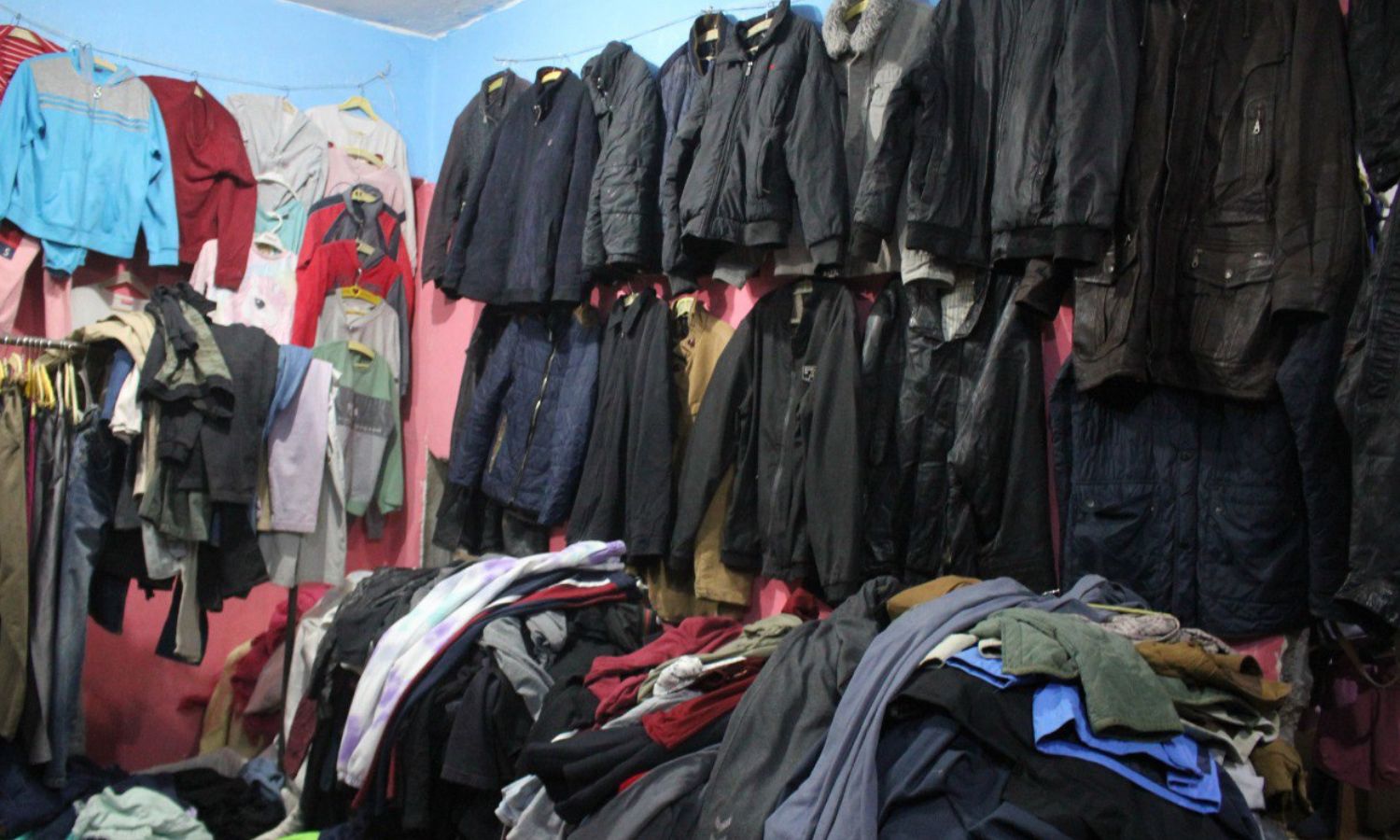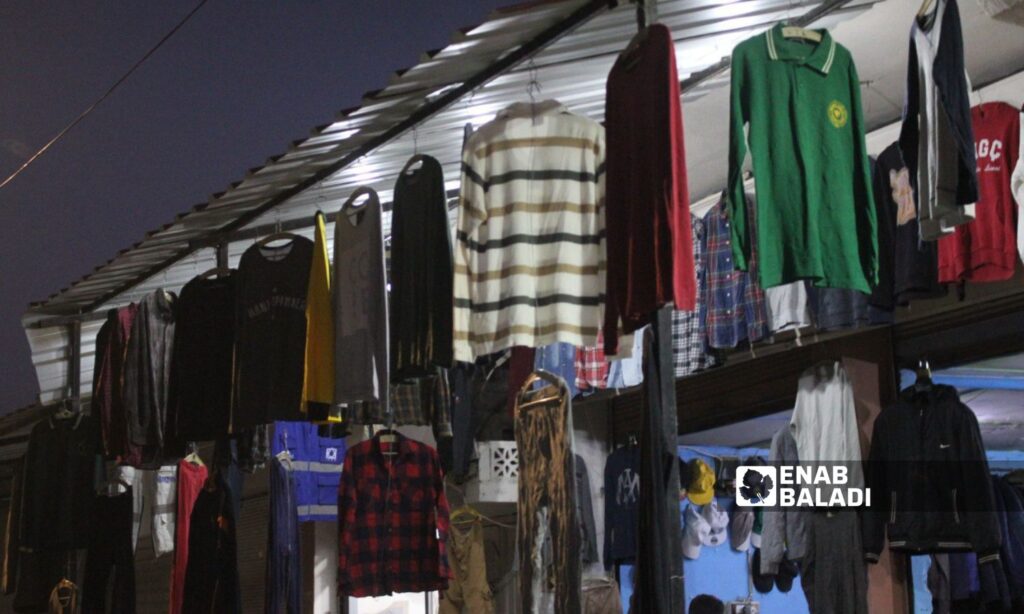The city of Ras al-Ain, northwest of al-Hasakah, is witnessing the spread of used European clothing (known as “bale”), which serves as an important source for meeting the clothing needs of the locals, especially under the difficult economic conditions the region is facing.
Taking advantage of the absence of regulation and increased demand, some merchants have hiked the prices of used clothing, which imposes an additional burden on the people who rely on it due to its lower cost compared to new clothing.
Sarah al-Hammadi, a mother of five, told Enab Baladi that the rising prices of used clothing have prevented her from buying clothes for her children, with the cost for a single child’s wardrobe reaching more than 600,000 Syrian pounds.
Sara believes that the greed of merchants and the lack of oversight are contributing to price increases. She calls for responsible authorities or bodies to take the necessary steps to regulate used clothing prices, particularly during the winter when people need coats and thick clothing.
On the other hand, Khalil al-Sharabi, 48, said he relies on this type of clothing because his income as an employee does not allow him to purchase new clothes.
Al-Sharabi noted that the prices of winter coats have reached excessively high levels, preventing many from acquiring the necessary clothes and adding a burden on those with limited income living in difficult economic circumstances.
Asma al-Sada, a resident of Ras al-Ain, pointed out that when used clothes first entered the region, their prices were acceptable. Over time, as demand increased, merchants exaggeratedly raised their prices. She demanded regulations be put in place to prevent price increases and the exploitation of the tough economic conditions in the region by merchants.

Used clothing displayed for sale in one of the shops in Ras al-Ain, northwest of al-Hasakah – February 25, 2024 (Enab Baladi)
High prices, Local council does not intervene
Enab Baladi obtained a price list of used clothing in Ras al-Ain, which includes a variety of clothes, including high-quality winter jackets costing 400,000 Syrian pounds.
The price of a mid-quality winter sweater reached 80,000 Syrian pounds, while pajama sets ranged between 100,000 and 200,000. European or Korean pants ranged between 60,000 and 70,000 Syrian pounds.
High-quality second-hand toys start at $10 and can go up to $20.
The exchange rate in the region is around 15,000 Syrian pounds to the dollar, considering the fluctuating market.
Mazen al-Qaisi, a used clothing shop owner, told Enab Baladi that the rise in used clothing prices is due to the scarcity of these commodities reaching Ras al-Ain and the transportation costs from Turkish ports and loading at the Tal Abyad border crossing, which led to an 80% increase in prices from before. He also mentioned some unsellable items amongst their purchases, causing them considerable financial losses.
Enab Baladi asked the local council in the area about the steps taken to control used clothing prices and whether the council has a role in the clothing trade and its regulation. They received a response from Ziad Malaki, a spokesperson of the local council, who clarified that the council does not intervene in the clothes trade of any kind as it is a free market depending on unofficial crossings and smuggling routes, in his words.
Used clothing displayed for sale in one of the shops in Ras al-Ain, northwest of al-Hasakah – February 25, 2024 (Enab Baladi)
The Syrian pound is the main currency in circulation in the area, but its unstable condition and unprecedented devaluation have exhausted the residents. The second currency is the Turkish lira (not widely circulated) due to the proximity of the city to the Turkish border, and the third is the US dollar.
Ras al-Ain and Tal Abyad are adjacent to the Turkish border and controlled by the Turkish-backed Syrian National Army (SNA) and its political umbrella, the Syrian Interim Government (SIG). They are surrounded by frontlines with the Syrian Democratic Forces (SDF), and the Turkish border is their only outlet to the outside world.











